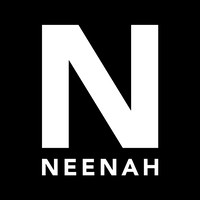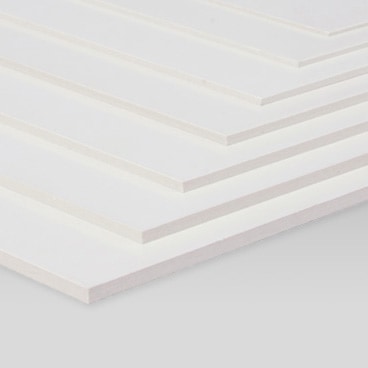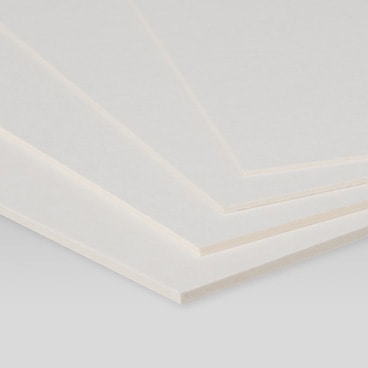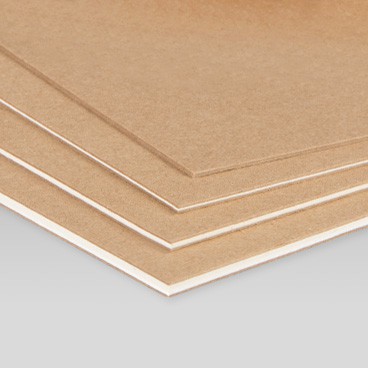Wide format marketing is the welcome mat to the retail store, convenience store, hotel, event, or convention; it’s the way that consumers instantly connect with and recognize brands. Before impressing customers, guests, and attendees with your offering, you must get their attention and draw them in. Once they’re in, signage points the way, drives the experience, brings home the sale, or creates a memory. No matter how you look at it, it’s one of the most essential pieces of brand marketing and believe it or not, it starts (and ends) with the right substrate.
For years, brands, designers, and print service providers (PSPs) have yearned for a wide format substrate that not only prints beautifully but promotes an environmentally friendly message as well. Until now, when brands turned to sustainable solutions, they were faced with an onslaught of synthetic, styrene-based choices.
“Brands have to juggle so many marketing priorities, from websites and social media to product packaging and business cards to wide format solutions for retail, hospitality, or convention environments. As a consumer moves from online to offline, the marketing collateral, advertising, and promotions must be eye-catching and consistent. For many companies today, that includes a reduction of their environmental impact and footprint,” says Jason Leonard, Business Development Manager for Neenah.
Time to Make a Change
Jason Leonard has worked in the graphics industry for over 20 years. He drives companies toward a better, smarter wide format industry though creative application and improved print service provider efficiency. As of late, he is seeing a dramatic shift in how brands and companies look at their overall marketing and environmental strategies.
“More brands are beginning to have conversations around responsible fiber sourcing. The market is filled with companies that are looking for alternative fibers and for solutions to match their initiatives. Many companies are also extremely interested in promoting a circular economy, an economic system aimed at eliminating waste and the continual use of resources. We are educating our customers that although recycling may not be the solution for plastics, it is for paper. Paper can be recycled up to 7 times, making it an integral part of a closed-loop/circular economy. They are stunned and excited when we have that conversation,” states Leonard.
He shares his advice for companies looking to make changes in their sustainability strategy as it relates to wide format marketing. Here are three ways for brands to make a difference without sacrificing beauty or quality.
1. Design with Sustainability in Mind
“Our advice to brands desiring to make an eco-impact with their marketing messaging is to design with sustainability in mind. From the first concept, consider the environmental impact of all printing and finishing techniques. Choose materials that not only accentuate the natural look and feel of the product offering, but support a belief in naturalistic, holistic, and sustainable choices. When it comes time to place an order, request smarter materials that promote minimized waste and efficient production benefits,” states Leonard.
2. Make Friends with Your Print Service Provider
According to Leonard, “It’s always a good idea to work with your PSP to choose the right substrate for your print project. They are familiar with what is available and can help direct you to products for specific applications such as hanging signage, point of purchase & point of sales signs, shelf-talkers, and directional signage. When Neenah wanted to develop a more sustainable addition to their already expansive environmental offering, they took direct feedback from printers as to what consumers were looking for in the marketplace.”
3. Choose a Substrate for Maximum Sustainability, Quality, and Performance
“There was a noticeable gap in the wide format market for a product with maximum sustainability, quality, AND performance. After extensive research, Neenah set to work in creating NEENAH IMAGEMAX® Signage, an all-new 100% paper-based, 100% blue bin recyclable wide format product. This latest addition to Neenah’s already expansive environmental offering is precisely engineered to the highest sustainability standards and accepts a wide variety of design and printing techniques that styrene cannot.
With its environmental benefits, our signage is superior to styrene alternatives both on press and for business, retail, hospitality, C-store graphics, and event solutions. This signage is an environmental wide format alternative to styrene, which also meets the standards of durability and quality that designers and printers are accustomed to in Neenah products. It is the best of both worlds — beauty without compromise,” continues Leonard.

See For Yourself
Learn more about new NEENAH IMAGEMAX® Signage and how to take your marketing signage to the next level while limiting your environmental footprint.


























